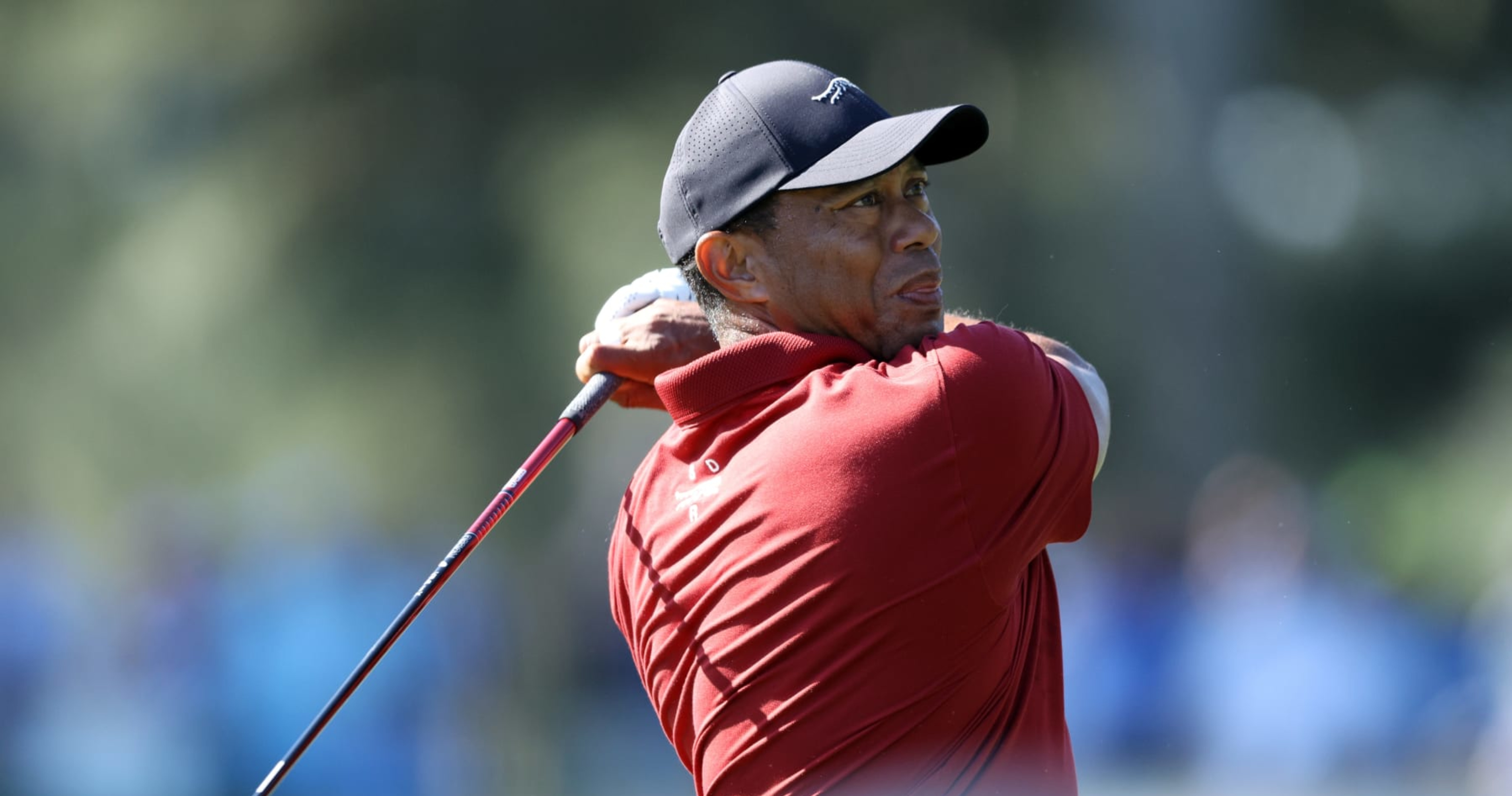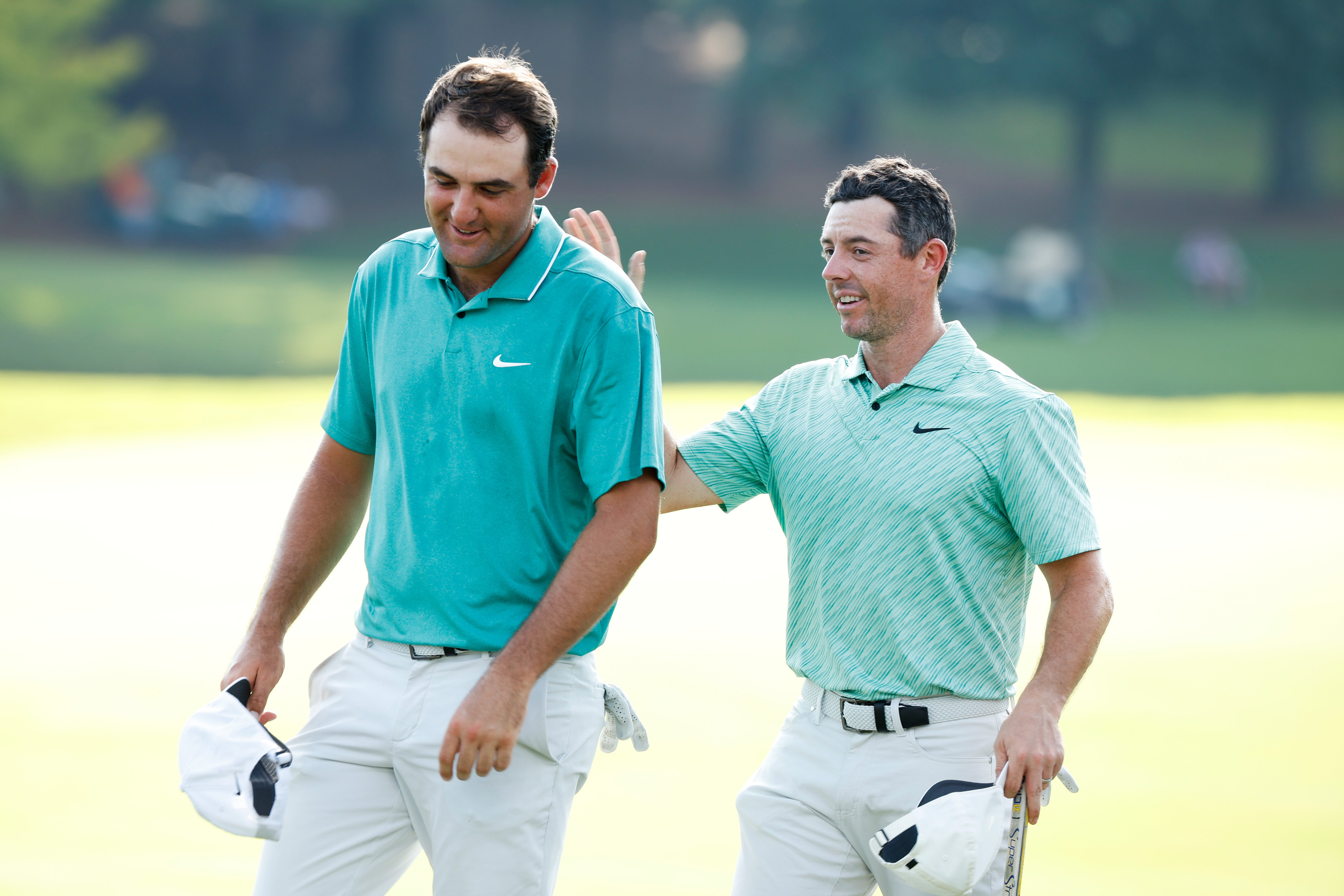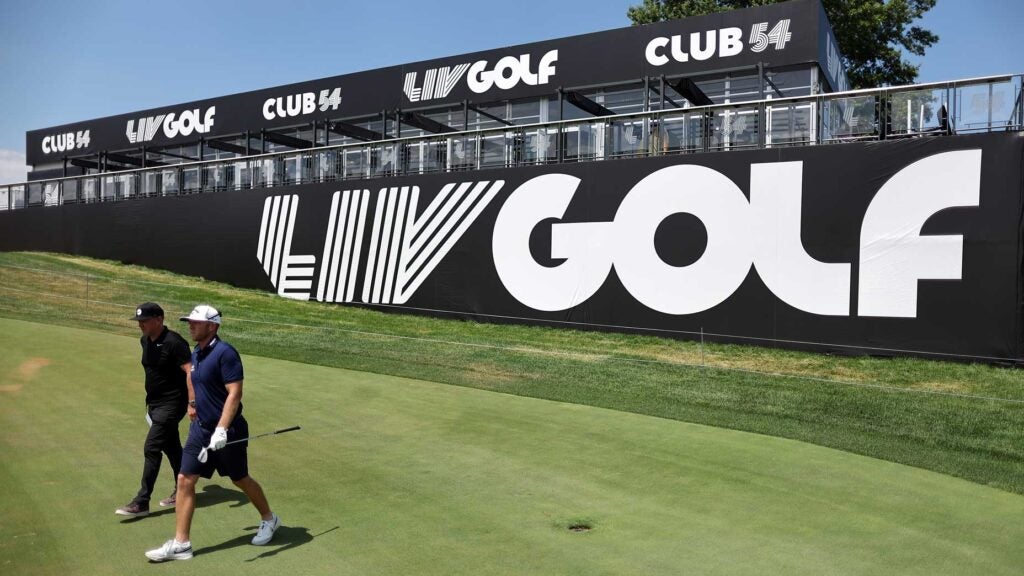Equipment
First Hand Review Of Club Champion’s Long-Game Club Fitting
Up & Down Review: Club Champion can provide every golfer with a Tour-level experience with over 50,000 brand agnostic combinations and a data-driven fitting methodology that demonstrates the potential improvements a properly fit club can provide.
I think it’s important to start this review with a brief story: I got fit in February 2018 by Club Champion fitter Justin Nowell at the then-brand new Flatiron location in New York. The experience was great. Justin was patient, walked me through how a putter fitting is different (SAM PuttLab vs. Trackman) and what they’re looking for and, ultimately, helped me find my current gamer that I still have rock solid confidence to this day.

Now, more than 3 year later, I was asked to come check out Club Champion’s new location in Livingston, NY. Naturally, we’re all still wearing masks while going in doors, but no more than 5 steps into this location and I hear someone yell “Hey Eric, what’s up?!” Sure enough, it’s Justin, who’s now helping get Livingston off the ground.
But this is what you can expect from a Club Championship fitting: a relationship with fitters who care about your fit and how your game is doing even years after your fitting.
Now onto my long game fitting with Livingston Club Champion fitter, Kevin Doyle.
For those entirely unfamiliar with custom club fitting, allow me to provide you with a brief background. When you walk into your fitting, your fitter should (and Club Champion does) ask what you’re hoping to accomplish in the fitting, what you feel like your strengths and weaknesses are, your normal shot shape and misses, etc.
View this post on Instagram
While talking about your game, Kevin let me warm up (I went with a 6 iron) while he investigated and took some measurements on what I was currently gaming: a Callaway Rogue driver with a UST Mamiya ATTAS 11 shaft (Extra Stiff), a Callaway Rogue 3W with a Graphite Design Tour AD wood shaft (Stiff), and a TaylorMade GAPR Mid driving iron with a UST Mamiya Recoil Prototype 125 shaft (Stiff).
I think it’s important to note that everything in my bag, including the aforementioned driver, fairway wood and driving irons, were custom fit for me in June 2018 by another nationally recognized fitter.
Once I was warm, Kevin handed me the driver and asked me to hit a few shots with my current driver to establish a “normal” baseline. The averages from 5 best swings were as follows: 113 MPH swing speed, 161 MPH ball speed (166 MPH peak), 3,586 RPMs backspin, 252 yards carry (277 yards peak), 268 yards total (291 yards peak).
Not bad, but not great numbers considering my club head speed (as shown by the 1.41 average Smash Factor). For anyone who enjoys the data, the obvious major problems here is that I was spinning the ball approximately 1,000 RPMs more than would be ideal, which was probably contributing to the reduced distance.
Kevin instantly went to work finding the right shaft. But why start there?
View this post on Instagram
When asked of the importance of a custom shaft, Nick Sherburne, Club Champion’s founder said:
“Club Champion starts with the shaft because that is what connects the golfer to the clubhead and it affects so much performance… What most fitters and golfers don’t understand is how much the shaft’s weight, profile, and stiffness can impact how a golfer swings the club. So for the most effective fitting, you need to eliminate variables — we dial in the shaft that allows for the fastest, most repeatable swing and then use the head to go deeper with the launch, spin, and forgiveness. We’re able to do it this way because we’re brand agnostic and have so many options; most fitters don’t have the variety to take this approach.”
This approach really helped set the tone for the fitting, as I was not very confident with my prior setup after some noticeable fitness and swing changes.
After messing around with a few options, the Project X Hzrdus Smoke Blue RDX 6.5—which is still an “extra stiff” shaft—offered the perfect balance of being stiff, but not boardy or too stiff, and weighty, but not heavy (it’s a counterbalanced design).
I continuously find that I get my best strike with the Smoke RDX when I trust it and just swing freely, as opposed to a white-knuckling, long-drive kind of approach.
And the proof was in the data, because when we hit the Callaway Epic MAX LS (average from 5 best swings): 113 MPH swing speed, 166 MPH ball speed (171 MPH peak), 2,398 RPMs backspin, 280 yards carry (287 yards peak), 291 yards total (306 yards peak), with a 1.47 average Smash Factor. That’s right, an overall average improvement of 5 MPH ball speed, 28 carry yards, and 38 total yards.

The perfect fit helps you find the center of the face right between the Jailbreak A.I. Speed Frame, as shown by the tee wear marks. And the USA-themed Smoke Blue RDX is perfectly timed with the Ryder Cup victory.
We then repeated the process the 3 wood. Baseline numbers with the Callaway Rogue 3 wood with a Graphite Design shaft were as follows (averages from 5 best swings): 107 MPH swing speed, 152 MPH ball speed (157 MPH peak), 4,277 RPMs backspin, 235 yards carry (243 yards peak), and 246 yards total (252 yards peak).
For the number junkies, you can see that my old driver and 3-wood are spitting out frustratingly similar numbers. Not good. This is only aggravated by the similar, inflated spin numbers.
Only adding the proverbial “insult to injury” is that my 3-wood dispersion looked like shotgun splatter shot, which is far from ideal when the 3-wood shot should be a club that can help you thread the needle on a tight tee shot, fire off a precision layup or even attack a green on a par-5. Trackman, however, doesn’t lie, and this revealed why this club has become less and less confidence inspiring.
Kevin instantly went to work finding the right shaft and then head combination. But this was where things got really interesting.
A lot of the current options allow for straightforward loft and lie adjustment. But this is where working with a knowledgeable fitter comes into play. While all of us are familiar with adjustable hosels, not many of us amateurs would ever contemplate putting a lefty loft sleeve in a right-handed club to make certain adjustments. But that’s exactly what Club Champion is capable of doing in order to find your optimal setup.

Fujikura’s Ventus has been in a number of golfers’ bags competing on the PGA TOUR, LPGA Tour, and PGA European Tour, and that’s because it flat out performs.
After testing out a few heads, the TaylorMade SIM2 Ti Fairway 3 wood with a Fujikura VENTUS Black 7-X was producing great numbers. Taking the average from my 5 best swings: 107 MPH swing speed, 155 MPH ball speed (161 MPH peak), 3,583 RPMs backspin, 248 yards of carry (261 yards peak), and 264 total (280 yards peak).
Additionally, the SIM2/VENTUS peak height came down a lot from where the Rogue/Graphite Design were, providing a more optimal ball flight that’s less susceptible to wind interference (while still retaining plenty of spin and height to make sure it rolls a predictable distance when it lands).
The combination of the SIM2 and VENTUS turned this into a fairway bomber, but with the help of swapping in the lefty-loft sleeve for a flatter lie angle helped turn it into a precise missile launcher. And that’s really the point of a quality fairway wood, something you can hit with confidence on trickier tee shots or at greens on long approach shots. Plus, the gapping with the SIM2 falls perfectly in between my driver and the next club…
View this post on Instagram
The GAPR driving iron has been very dependable for me. It’s been great for tight tee shots, longer par 3s, and even attacking greens. In sum, it does everything I could want. So replacing this was gonna be a challenge.
Taking the average from 5 best swings: 100 MPH swing speed, 140 MPH ball speed (144 MPH peak), 3,880 RPMs backspin, 214 yards carry (225 yards peak), 231 yards total (241 yards peak).
Kevin must of realized that I needed some air, so he suggested I take a brief break, drink some water, and recharge before we started the final piece.
View this post on Instagram
While catching my breath, Kevin and I talked about my thoughts about the fitting and what I was looking for in a replacement driving: How do I primarily use this club, off the tee or from fairways? What do I like and not like about my current setup? Do I have a certain profile or look that I want? Is adjustability important?
After talking, Kevin had a better idea of what I wanted to accomplish and how this 3rd long club would fit in the bag. The Nippon Modus Hybrid GOST rose to the top very quickly.
Between the KBS C-Tapers in my irons and getting fit into the Smoke RDX (driver) and VENTUS Black (fairway wood), it might have become apparent to some of you gearheads that I like stiffer feeling shafts. The Nippon GOST falls perfectly in line with everything else in the bag, reactive but stiff without being telephone pole stiff.

The X Forged UT is hot and offers iron-like control over your ball flight, making it a real performer regardless if you’re hitting from the tee or the fairway.
When we started exploring heads, I was really impressed how good some of the newer models felt, specifically the Srixon and Callaway, both of which are forged bodies and, therefore, can have their loft and lie angles tweaked.
The Callaway X Forged Utility head weight and profile helped it ultimately come out on top, as demonstrated by the average from my 5 best swings: 102 MPH swing speed, 148 MPH ball speed (152 MPH peak), 4,001 RPMs backspin, 225 yards carry (236 yards peak), 238 yards total (255 yards peak).
Much like the SIM2 fairway wood, the Callaway X Forged bridges the gap between my 4 iron. The forged head of the Callaway means that we can adjustments to the loft and lie angles to more closely match my irons (instead of forcing myself to play something that doesn’t neatly fall in line with my other clubs) as I continue to make swing changes.
Despite my clubs being custom fit just 3 years ago, a few lessons and fitness improvements have made an improvement in my game that certain clubs no longer were optimal and, more importantly, were causing me to “fight” and “adapt” to the equipment.
Fortunately, Club Champion helped me identify a setup that not only is optimal now, but will also continue to help me perform my best as I continue to improve my game.
With the help of knowledgeable fitters like Kevin, it’s evident why Club Champion is one of America’s 100 Best Clubfitters.
Cover Image Via Instagram
-

 News6 days ago
News6 days agoPGA Tour Loyalty Payouts Revealed: Tiger Woods Stands to Make The Most
-

 LIV Golf Tour1 day ago
LIV Golf Tour1 day agoWATCH: Kevin Na Throws a Temper Tantrum at LIV Golf Adelaide
-

 Fantasy Golf Predictions1 week ago
Fantasy Golf Predictions1 week agoFantasy Golf Picks, Odds, and Predictions – 2024 Zurich Classic
-

 News1 week ago
News1 week agoPGA Tour Players Who Rejected LIV Golf Offers Set to Find Out How Much Their Loyalty is Worth
-

 Fantasy Golf Predictions24 hours ago
Fantasy Golf Predictions24 hours agoFantasy Golf Picks, Odds, and Predictions – THE CJ CUP Byron Nelson
-

 News5 days ago
News5 days agoDouble Trouble: We May See Two Woods at 124th U.S. Open
-

 LIV Golf Tour6 days ago
LIV Golf Tour6 days agoGreg Norman Reveals that LIV is Considering Moving to a 72-Hole Format
-

 News5 days ago
News5 days agoTony Romo Weighs in on Scottie Scheffler: ‘He’s Never Failed to Break 70 in 500 Rounds’









